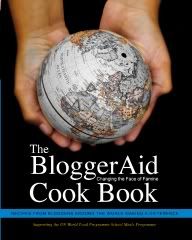Palermo has been selected as Italian Capital of Culture 2018 so here, in no particular order, are 18 facts - some quirky, others not so - that you may not know about the city:
1. Its Palazzo dei Normanni was, from 1130 , the seat of the Sicilian Parliament, one of the oldest in the world. (I've met a lot of Sicilians who claim that it is, in fact, the oldest.] It now houses the Sicilian Regional Assembly.
2. In 2016 Palermo was declared the worst city in Italy for traffic congestion.
3. Frutti di Martorana, the marzipan "fruits" you will see everywhere in Sicily in autumn, were, according to legend, first made in The Martorana Convent in Palermo.
4. The city's most important Arab and Norman buildings, along with the Cathedrals of Cefalù and Monreale, were collectively named a UNESCO World Heritage Site in 2015.
 |
| San Giovanni degli Eremiti, Palermo |
5. Palermo street food is legendary. Eat it first, then ask what's in it!
6. The Palermo football team's badge has been ranked (by the British Daily Mail) as among the best in the world.
7. The city has wide boulevards reminiscent of towns in France.
8. The word for traditional Sicilian rice balls, arancini, is used in its feminine form, arancine there.
9. The Catacombe dei Cappuccini (Capuchin Catacombs) are a very macabre, and often upsetting, sight but must be seen. I once decided to leave them till last on a school trip but my students, having been shown the Parliament, Cathedral and other beautiful buildings, were impatiently demanding, "Can we go and see the dead people now?" by mid-morning.
 |
| Me with students in Palermo, 1995 |
10. The city is second only to Naples for the number of coffee manufacturers that call it home (47 in 2011).
11. During the reign of Ruggero (Roger) II, Palermo was a city in which Muslims, Christians and Jews lived side by side in harmony. This was to come to an end, however, under Frederick II, who expelled the Muslims in 1224.
12. In 1185 Roger's daughter and Frederick's mother Costanza d'Altavilla (Constance d'Hauteville) travelled to Germany to be married with the greatest dowry the world had ever seen. She gave birth to her son in the market square in Ancona on her way back to Sicily. You can read more about this extraordinary journey in a book I reviewed here. Costanza is buried in Palermo Cathedral.
13. Palermo has a museum of traditional puppets (opera dei pupi) where you can also see puppet shows at certain times of the year. You can find out more about opera dei pupi in my post here.
 |
| Some of my own Sicilian puppets |
14. Traditional Sicilian carts vary, from province to province, in their design and size. Those from Palermo were squarer and wider than many of the others and were originally used for transporting grapes. This is a link to an article on Sicilian carts that I wrote for Italy Magazine in 2010.
15. Not strictly in the City of Palermo but in Palermo Province and a short bus ride away is Monreale, whose cathedral, begun in 1174, is one of the best preserved examples of Norman architecture anywhere. It contains Byzantine mosaics throughout. There are stunning views of Palermo from Monreale.
16. In 2014 the priests of Palermo Cathedral were much criticised for displaying a prominent WC sign in a side chapel there. I don't know about you, but when being a tourist I've often desperately needed the loo by the time I got to a city's cathedral!
17. Palermo was named Panormus ("complete port" or possibly "well-protected bay") by the Greeks, This became Balarme under Arabic rule.
18. To end on a sombre note, Palermo Airport, formerly known as Punta Raisi, was renamed in 1995 in honour of the anti-Mafia judges Paolo Borsellino and Giovanni Falcone who were both murdered in 1992, the latter along with his wife. The airport's full name is now L''aeroporto Internazionale Falcone e Borsellino di Palermo-Punta Raisi but it is usually referred to as aeroporto Falcone e Borsellino. Italy has been remembering the two judges in this, the 25th anniversary year of the stragi (massacres) of Capaci and via D'Amelio. We must not forget that all but one of their bodyguards died with them on those terrible days.
The candidates for Italian Capital of Culture 2020 are Agrigento, Catania, Messina, Noto, Ragusa and Siracusa. Guess which two I'll be rooting for!
 |
| City of Palermo Coat of Arms |































No comments:
Post a Comment